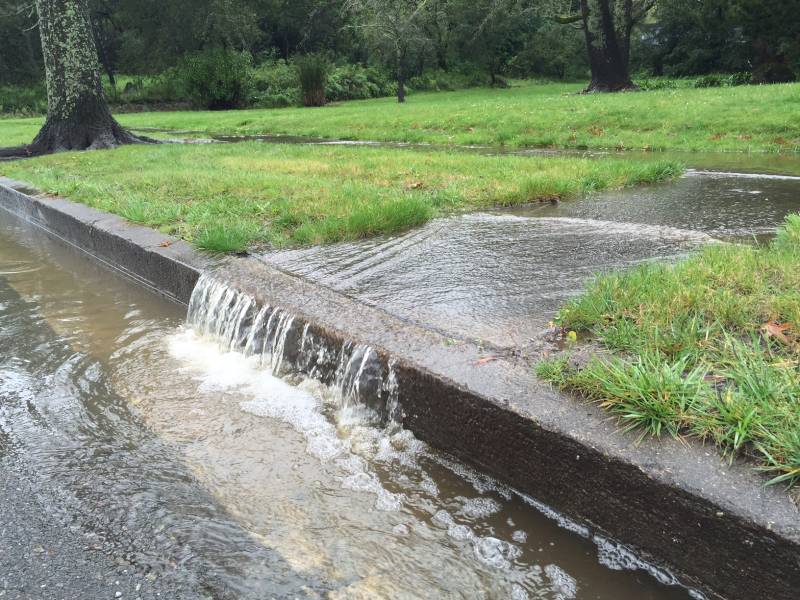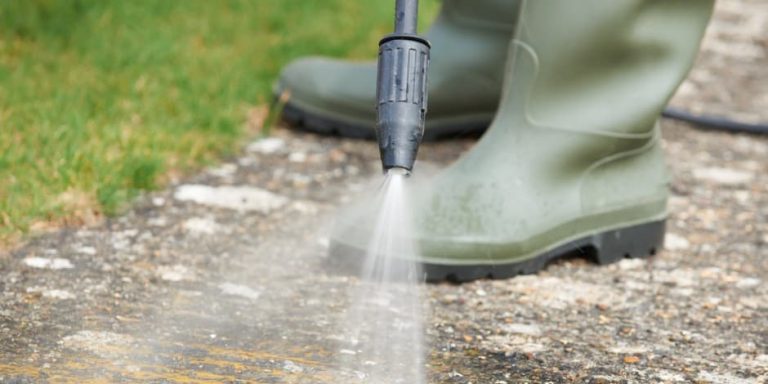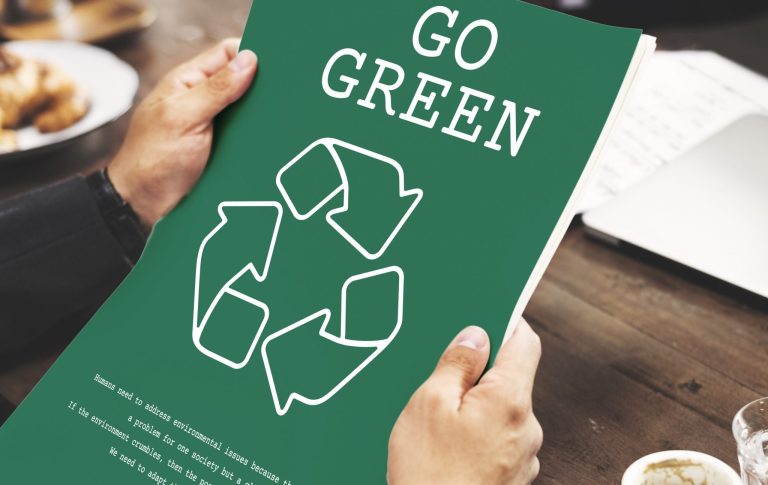
When you fire up a power washer and begin blasting away grime from your driveway or siding, you’re probably focused on one thing—getting your property clean. But have you ever wondered where all that dirty water goes?
Power washing produces runoff that doesn’t just disappear. It flows into systems and spaces we rarely think about—carrying with it chemicals, oils, dirt, and debris. In this article, we’ll follow the journey of power washing runoff from your driveway to its final destination—and reveal the serious environmental implications along the way. 🌎🧼
🚿 What Is Runoff?
Runoff refers to water that flows over hard surfaces—like concrete, asphalt, or rooftops—instead of soaking into the ground. During power washing, that water picks up:
- Soap and detergents
- Oil and grease
- Dirt and silt
- Paint chips or residues
- Pesticides or fertilizers (if nearby)
This mix of contaminants creates a kind of toxic cocktail that flows down your driveway, into the street, and eventually into the stormwater drainage system. 💧
🛣️ Step 1: From Surface to Gutter
As you wash your driveway, the water you spray carries all those contaminants toward the edge of the pavement. Because most surfaces are impermeable (they don’t absorb water), the runoff begins to flow downhill, usually toward the nearest street curb or gutter.
Along the way, it may:
- Pick up more dirt or litter
- Flow across pesticide-treated lawns
- Wash past pet waste, tire residue, or leaves
This expanding trail of pollutants collects in the curb line—heading straight for the storm drain. 🧪🌀
🌧️ Step 2: Into the Storm Drain
Once the runoff enters a storm drain, it doesn’t go to a water treatment facility. Unlike the water in your home’s sinks and toilets, stormwater is typically not filtered or cleaned.
Instead, it travels through underground pipes—sometimes mixing with other street runoff—and empties directly into nearby rivers, lakes, bays, or oceans. In urban areas, this trip can take just minutes. In rural zones, it may travel through drainage ditches or culverts first.
Regardless of the route, the destination is the same: your local waterway. 🏞️
🐟 Step 3: Into Ecosystems
Once this contaminated runoff reaches a body of water, it can cause serious environmental damage. Many of the substances carried by power washing runoff are toxic to aquatic life, including:
- Bleach and detergents that strip oils from fish gills
- Phosphates that cause harmful algae blooms
- Paint chips that may contain heavy metals
- Grease and oil that coat and suffocate aquatic plants
- Sediment that clouds water and blocks sunlight
Even small amounts of these pollutants, when combined with runoff from hundreds or thousands of homes and businesses, can devastate delicate ecosystems. 🐠💀
🧪 Runoff: A Leading Source of Pollution
The U.S. Environmental Protection Agency (EPA) classifies stormwater runoff as one of the leading sources of water pollution in the country. Power washing is a significant contributor because:
- It uses high water volume
- It frequently involves chemicals
- It’s performed on impervious surfaces
- Runoff is often uncontrolled or ignored
This isn’t just a local issue—it contributes to global water degradation and affects everything from recreational lakes to marine biodiversity.
🏡 How Residential Runoff Adds Up
Let’s say you pressure wash your driveway for one hour, using an average of 3 gallons per minute. That’s 180 gallons of water—most of it becoming runoff.
Now imagine:
- Your neighbor does the same next weekend
- A local business pressure washes its storefront
- A city contracts a company to clean sidewalks
This cumulative impact can result in thousands of gallons of polluted water flowing untreated into waterways after a single day of routine cleaning. 🌊🚨
✅ What You Can Do to Stop the Flow
The good news is that there are practical, easy ways to minimize runoff from power washing—without sacrificing cleanliness.
1. Sweep First
Dry sweeping removes leaves, dirt, and debris before washing—reducing how much gets pushed into the drain.
2. Block the Storm Drain
Use rubber mats, sandbags, or plastic barriers to stop runoff from entering drains. Redirect the flow to landscaping where it can absorb safely.
3. Wash on Permeable Surfaces
Whenever possible, perform power washing over gravel, grass, or permeable pavers to let water soak in instead of running off.
4. Use Eco-Friendly Cleaners
Biodegradable, phosphate-free, non-toxic detergents are far less harmful if they do escape into runoff.
Browse Amazon Here For Eco-Friendly Pressure Washing Detergents
5. Spot Clean Instead of Blanket Washing
Focus on targeted stains instead of washing entire surfaces indiscriminately. This reduces water use and runoff volume.
6. Use Water Recovery Equipment (for Pros)
Professional-grade reclaim systems can vacuum up dirty water before it enters the drain. This is ideal for commercial projects.
🧠 Bonus: Educate Your Neighborhood
Neighborhood-level change is powerful. Encourage others to follow runoff-safe practices by:
- Sharing tips online or on community boards
- Hosting green cleaning workshops
- Asking your HOA to set environmental washing guidelines
- Choosing contractors that use reclaim or eco-friendly methods
Every driveway, sidewalk, and storefront cleaned responsibly makes a difference. 🏘️🌱
🌍 Final Thoughts
Out of sight shouldn’t mean out of mind. Power washing runoff may disappear quickly from your driveway, but its environmental impact lasts long after the job is done.
By understanding where that water goes—and taking a few extra precautions—you can protect your local ecosystem, reduce pollution, and clean with a clear conscience. Because it’s not just about clean surfaces—it’s about clean rivers, clean oceans, and a cleaner planet. 💧🌎
Browse Amazon Here For Eco-Friendly Pressure Washing Detergents






